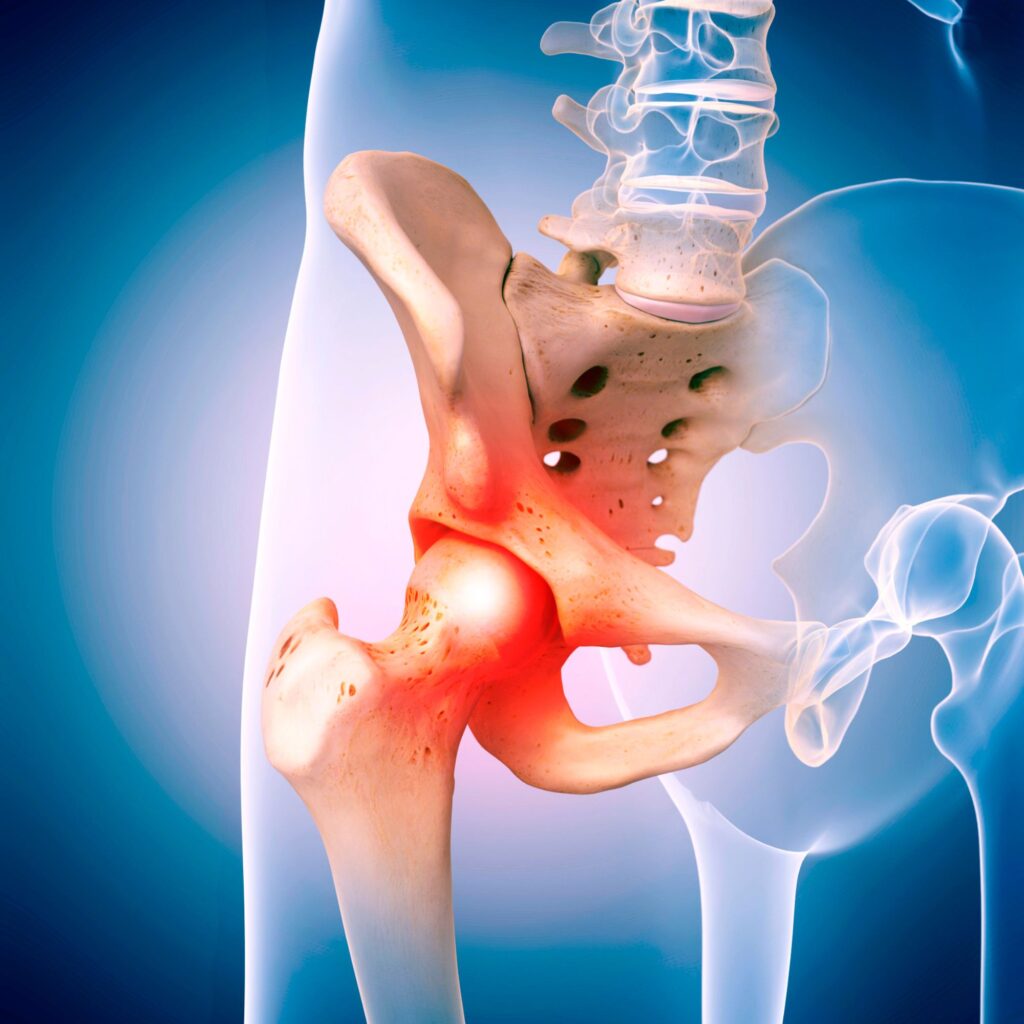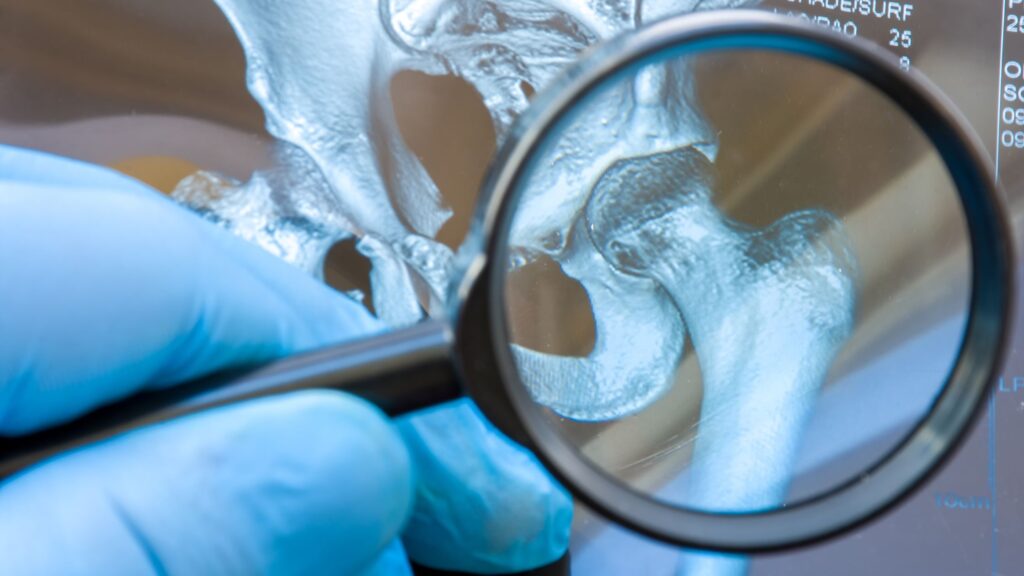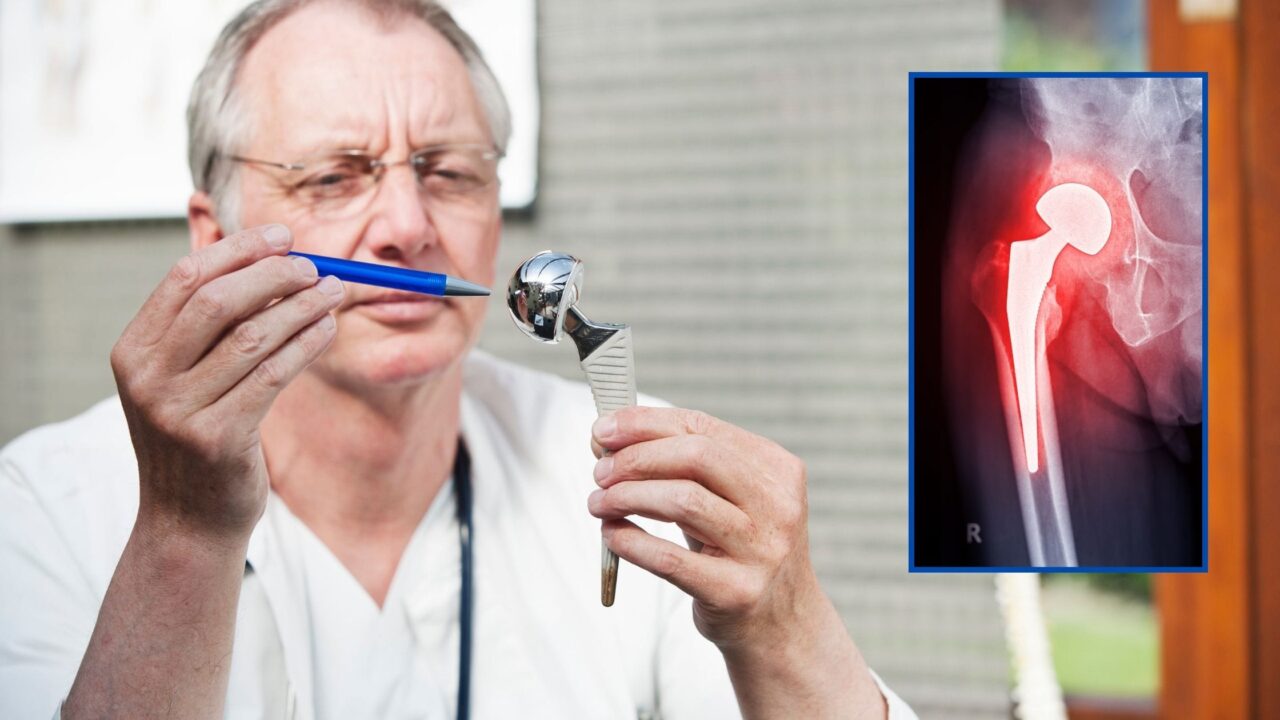Hip osteoarthritis is a common degenerative joint disease that affects millions of people worldwide, leading to chronic pain and reduced mobility. For those with advanced cases, hip replacement surgery (hip arthroplasty) can offer significant relief and improve quality of life. In the UK, where the incidence of osteoarthritis is rising due to aging populations and lifestyle factors, hip replacement surgery has become one of the most commonly performed procedures. Approximately 8.75 million people in the UK have sought treatment for osteoarthritis, with a significant number affected by hip osteoarthritis specifically (Arthritis Research UK).
Types of Hip Replacement Surgery

- Total Hip Replacement (THR)
This is the most common type of surgery for hip osteoarthritis. In THR, both the acetabulum (hip socket) and the femoral head (the ball of the hip joint) are replaced with prosthetic components. This procedure is known for its long-term effectiveness, with patients experiencing significant pain relief and restored mobility.
- Partial Hip Replacement
Unlike THR, a partial hip replacement, or hemiarthroplasty, involves replacing only one part of the joint (usually the femoral head). This type of surgery is less common for osteoarthritis but may be used in cases where only part of the joint is damaged. - Hip Resurfacing
In this less invasive option, the surgeon reshapes and caps the femoral head with a metal covering rather than replacing it entirely. Although not suitable for all patients, hip resurfacing can be an excellent option for younger, more active individuals who want to preserve as much of their natural joint as possible.
Types of Hip Prostheses
There are various prosthetic materials and designs used for hip replacement. The choice of prosthesis depends on factors such as the patient’s age, activity level, and bone quality. The two most commonly used materials are:
- Metal-on-Polyethylene
This is the most frequently used combination in hip prostheses, where a metal femoral head moves within a plastic (polyethylene) socket. It is durable, affordable, and well-suited for older, less active patients. - Ceramic-on-Ceramic
Known for its high wear resistance, ceramic-on-ceramic hip replacements are popular among younger patients who lead more active lifestyles. This material also generates fewer metal ions, reducing the risk of adverse reactions. - Metal-on-Metal
Once common, metal-on-metal prostheses are less frequently used today due to concerns about wear and the release of metal ions, which can cause inflammation and tissue damage. However, it remains an option for some patients. - Ceramic-on-Polyethylene
A hybrid approach, this type of prosthesis pairs a ceramic ball with a polyethylene socket. It offers high durability and is one of the more advanced options for patients seeking long-term relief from hip osteoarthritis.

Advanced Procedures with the Most Benefits
Minimally invasive surgery is one of the most advanced forms of hip replacement surgery. This technique uses smaller incisions than traditional methods, leading to less muscle damage, quicker recovery, and reduced scarring. Patients undergoing minimally invasive surgery generally experience faster rehabilitation and can return to their daily activities sooner than with conventional surgery.
Robotic-assisted hip replacement is another cutting-edge advancement. This technology allows for greater precision in implant placement, which can improve the longevity and function of the new joint. Robotic systems, like MAKOplasty, help surgeons achieve a better fit for the prosthesis, which leads to enhanced recovery outcomes.
Incidence and Statistics in the UK

In the UK, hip replacement surgery is a routine procedure, with approximately 100,000 surgeries performed each year.
According to the National Joint Registry (NJR), most patients undergoing this surgery experience a significant reduction in pain and improvement in function. Ceramic-on-ceramic and metal-on-polyethylene prostheses are among the most commonly used combinations in the UK.
Sources: National Joint Registry (NJR), British Orthopaedic Association, National Health Service (NHS)
Contact Us
